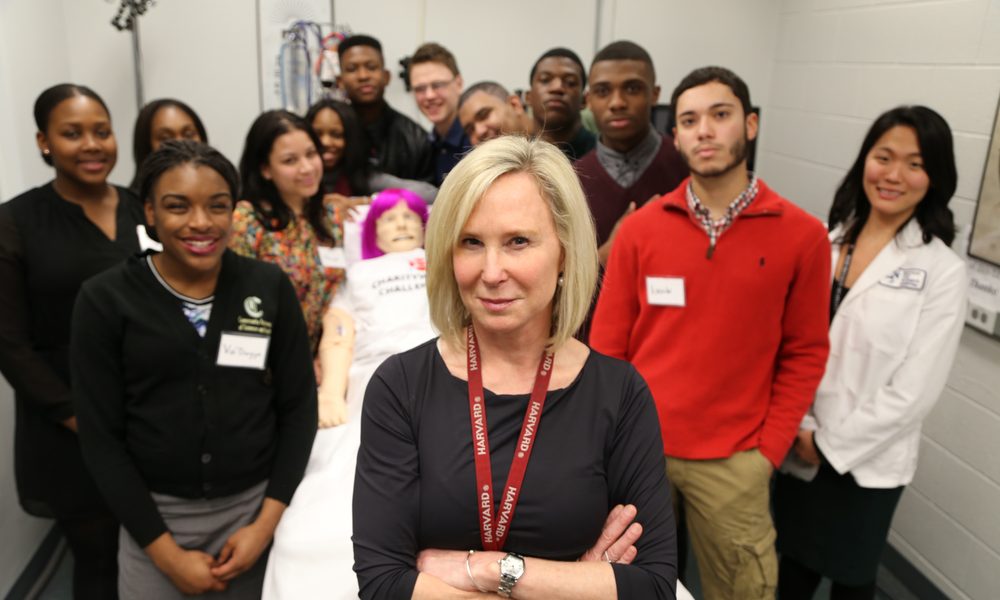

Today we’d like to introduce you to Julie Joyal.
Julie, can you briefly walk us through your story – how you started and how you got to where you are today.
On the outside, I’m a privileged, white woman, who has certainly been blessed in many aspects of my life. What isn’t obvious is my unusual journey – from dealing with my learning disability to developing a consciousness of the inequity in education and medicine, and then receiving an education degree at almost 50 years old from Harvard School of Education. All of these things together ignited my passion to find an innovative way to address some of the injustices and remedy some of the issues that afflict our society. Here is my story:
I grew up with a major learning disability. I am severely dyslexic. This meant that I did not read or write until I was 10, a scientifically proven factor associated with poor future success in life. As you can imagine, school and learning were a nightmare for me. I was labeled stupid and lazy. I took an IQ test in elementary school and they called my parents to tell them I was, “mentally retarded”. Luckily, my mother advocated for me and I had the social capital I needed to help me graduate high school.
I knew this was a great advantage as I grew up in LA, where my mom worked as a social worker and would take me with her on her home visits to her clients’ homes in the projects of East LA. These were sometimes homes with single moms, in one bedroom apartments with 3 kids. She helped tutor, counsel and mentor women so that they could complete their degrees, to assure they would find good jobs to help break the poverty cycle. I wondered, even then, why did everyone not live in a big house like mine. It didn’t seem fair.
I then attended high school in the 70’s during the school busing era. I was very aware at the time that students needed to leave their homes at 5:30 am to travel an hour and a half to my rich and affluent high school. When students arrived each morning, no one was there to help facilitate the transition, making students feel isolated and upset. I couldn’t help but wonder why do students need to leave their communities in order to access better education. This is when it became apparent to me that your zip code determines the quality of your school and educational opportunities.
Although, I had my own personal and different kind of struggles with getting better education, luckily, I had found my passion at a young age. At 10 years old, I had met a loving, caring school nurse who took care of me when I was sick one day. Since that time, all I wanted to be that nurse. Somehow, I managed with grit, determination, and a lot of hard work, to overcome my insecurities about being “stupid and lazy”. Having this goal of becoming a nurse gave me the perseverance to succeed and finish school. I received my R.N. degree from a community college with high honors and a 4.0 GPA later receiving my B.S.R.N. from Northeastern University. Subsequently, I had a wonderful 30-year career in nursing and became an award-winning leader in my field. Twenty of those years, I worked in an Intensive Care Unit at a leading Boston Hospital taking care of critically ill patients and advocating for those most in need.
Throughout my nursing career, the inequities I had witnessed as a child and adolescent were constantly around me as an adult and never far from my mind. As a nurse, I saw first-hand the disparities in health care services, and later in Boston the inequalities of housing, law enforcement, the justice system, and the huge educational disparities between my kids’ high school and one right down the street in Boston. I started volunteering my time and sitting on various committees. For 8 years, I was a board member of an inner-city charter school. While some charter schools were great, overall it seemed like very little had changed in education over the past 50 years since I was in high school.
I strongly believe volunteers can change the world. However, I came to realize that this was not enough for me. I decided it was time for me to stop thinking about issues of inequality and start doing something about it. So, at the age of 48, I decided to apply to Harvard University Graduate School of Education to get a Policy and Management Master’s degree. Terrified to apply, I could still hear my old teachers telling me I would never amount to anything. But, with the guidance of a mentor, I took a chance and got in and thrived. My goal was to find a way, big or small, somehow, to make a difference and to level the playing field. So, I took my past expertise in the medical field and my new education policy degree from Harvard to find an innovative way to make a change. That opportunity came to me shortly after graduation, in the form of a fledgling nonprofit, called HMS MEDscience.
Harvard Medical School’s Dean of Students, Dr. Oriol, had a great idea about bringing STEM (science, technology, engineering, and math) education alive for inner city youth by engaging them in simulations usually reserved for elite medical students. She needed a partner to help put the idea into action. I stepped up. Miraculously, this seemed to be exactly what I’d been seeking without being able to name it. I dove in, going to work right away to discover the ways and means to bring high-quality STEM education to historically underserved youth. With our medical backgrounds, Dr. Oriol and I created the mission, organization and curriculum of HMS MEDscience.
The Mission of HMS MEDscience is to address the inspiration gap in high school STEM education by providing opportunities that enhance the 21st-century skills that are necessary for success in academic and future careers. Our Vision is that all students, regardless of background, education or zip code, have equal access to high-quality education in the sciences.
We are confident that we are not only reshaping the face of urban science education but we are creating a cadre of STEM-oriented, non-traditional young leaders who will go on to redefine the STEM professions. This is only fair, particularly in light of our nation’s rapidly changing demographics.
For me, I continue to be lucky. I’ve found a way to braid my two great passions, medicine, and education, in the interest of making the world, and our country in particular, a better and fairer place.
Great, so let’s dig a little deeper into the story – has it been an easy path overall and if not, what were the challenges you’ve had to overcome?
No, I wish! Getting this program up, going and growing has had many ups and downs, and I have had a lot of personal growth along the way while learning how to run a nonprofit. My strongest trait is my passion for our mission. I worked initially 24 hours/ 365 hours a year because I believe deeply, viscerally in the value of this program in creating opportunity by closing pernicious opportunity and achievement gaps. Our work is leveling the playing field so that ALL students, not just the ones in affluent school districts, have access to top-notch STEM education.
I have had to persevere through various obstacles and seemingly insurmountable challenges. I am so glad that I never gave up, even though I’ve been tempted several times. Some of the greatest hurdles were budgetary and fund-raising challenges when we just didn’t have the funding to do the quantity and quality of work needed, management stresses as we grew from a nimble start-up to a more established organization. I believe that perseverance ultimately triumphs and therefore, I was determined to keep at it and grow my program so as many students as possible could benefit.
As is usually the case, hard work was abetted by luck which several times came to my rescue.
Please tell us about HMS MEDscience.
The Mission of HMS MEDscience is to address the inspiration gap and opportunity gap in high school STEM education by providing opportunities that enhance the 21st-century skills that are necessary for success in academic and future careers. Our Vision is that all students, regardless of background, education or zip code, have equal access to high-quality education in the sciences. We are most proud that we are inspiring the next generation of scientists and providing a diverse workforce in the STEM fields.
We started in 2008 with 12 inner-city high school students. We are now serving over 1,000 students a year in 30 local high schools including 19 Boston Public Schools in four school districts. These students are exposed to state of the art simulation experiences just as though they were elite medical students. Our program addresses the achievement, opportunity and inspiration gaps in high school STEM education. We do this by providing opportunities that accelerate learning about biological systems while enhancing the 21st-century skills, like teamwork and problem-solving that are necessary for success in college and career. Our vision was and remains that all students, regardless of background, education or zip code, have equal access to high-quality education in the sciences.
Our goal is to be in every Boston high school, all 32, with our high quality, effective, and innovative curriculum and then take our program to other cities. Although housed at Harvard Medical school, As the Executive Director I am responsible for raising all the funding for our initiative through a unique combination of fees for service, contributions, and tuitions from our summer program. Our private payers enable us to serve increased numbers of disadvantaged students.
We are very proud to be able to offer our high-quality programming to students in the Boston Public Schools. We have our first Boston Public School student in Medical School at Tufts in his second year. We are unique because we are one of the only programs in the country that we know of offering hands-on learning in simulation during the school day to students. We are changing lives.
HMS MEDscience is a non-profit Program of Harvard Medical School. We are currently in 30 high schools, of which 19 of these schools are Boston Public Schools. MEDscience is currently engaging students from Madison Park Technical Vocational High School, Dearborn Academy, Margarita Munez, English High School, Edward M. Kennedy Academy for Health Careers, Community Science Academy of Science and Health, Boston Green Academy, John D. O’Bryant, Greater Egleston High School, Boston Community Leadership Academy, Urban Science Academy, and Boston Latin, Boston Day and Evening, just to name a few. Our goal is to be in every Boston high school with our high quality, effective, and innovative curriculum.
We are an educational initiative designed to inspire and engage students to pursue majors and careers in the STEM (science, technology, engineering, and math) fields. Our data shows that our curriculum increases students’ interest, achievement and career intentions in the healthcare and science fields by engaging them in hands-on, real-life, field-based experiences coupled with an intensive program of instruction. Through the program, they learn scientific literacy, critical thinking, and problem-solving while also building teamwork and communication skills and developing personal health literacy.
MEDscience is a new way to teach the biology of the human body to high school students and is a full semester, 16-week intensive credit-bearing science course that engages students in hands-on experiences in STEM by exposing them to real-life, simulated medical emergency room scenarios. The MEDscience curriculum is embedded into a Biology class, Anatomy and Physiology class, AP Biology, Health Elective, Medical-Vocational Tech courses, such as nursing or medical assistant classes, Chemistry or an elective course. Traditional classroom occurs four hours a week at the high school following the organ system curriculum, which is in line with the common core state standards. For 75 minutes a week, students lead a medical emergency-room simulation or participate in a related clinical skill in our simulations lab located directly on the Harvard Medical School campus.
The curriculum is broken into 7 units, with each unit focused on a different body system. The cornerstone of our program is the use of a simulator called “STAN”, a computer-controlled, adult mannequin that breathes, has a pulse and blood pressure, heart tones, breath sounds and bowel sounds while emulating the symptoms of various diseases. This also builds health literacy as students gain first-hand experience with the diseases within their communities, such as asthma, diabetes, and addiction. Students interact with the patient by carrying on a two-way conversation, taking a medical history and evaluating physical exam findings. Through their challenges and successes during the course, students show themselves that they are able to thrive in any career path they chose. Additionally, we are developing teacher training for Boston Public School teachers by creating in-depth professional development for new science teachers and codifying our pedagogy. This intervention will help us ensure our unique approach and impact extend beyond the MEDscience classroom.
Many organizations are working to address the STEM achievement gap in high schools while others are offering workforce development. MEDScience aims to connect both needs. MEDscience provides an innovative approach to teaching the biology of the human body to high school students, as well as getting them excited about STEM. Our approach gets students out of the classroom weekly for a hands-on experience that is immediately relevant to the real world. Unlike other organizations, MEDscience rewards critical thinking over memorization. Instead of focusing on a lecture-based model, we give students a space to use their imagination, work with others, and realize their own potential. MEDscience does this by allowing students to lead the emergency scenario. Staff and volunteers act as physician consults to guide students and facilitate discussion, rather than lecture them. Students apply their knowledge of biology, diagnose the patient and solve problems in teams. This facilitates student self-efficacy and teaches 21st-century skills.
The major outcomes that were achieved from our survey results thus far that we hope to continue achieving are the following: 95-97% of students reported an enhanced interest in science by indicating that the desire to take more classes in biology and/or health care had increased and that participating in the program helped clarify their career goals; 100% of students would recommend this course to a friend; 89% of students agreed that MEDscience raised their self-confidence; 97% felt that they were more comfortable working on a team after completing the MEDscience program; and 89% believe that MEDscience changed and improved the way they handle problem-solving.
Do you look back particularly fondly on any memories from childhood?
Yes, I hope I have taken what I have seen and tried to help make the world a more just place to live.
As mentioned, I grew up in LA, and something that shaped who I am today was being with my mom who worked as a social worker and she would take me with her on her home visits to her clients’ homes in the projects of East LA. These were sometimes homes with single moms, in one bedroom apartments with 3-4 kids. She helped tutor, counsel and mentor women so that they could complete their degrees, to assure they would find good jobs to help break the poverty cycle. I wondered, even then, why did everyone not live in a big house like mine. It didn’t seem fair.
Contact Info:
- Address: HMS MEDscience Program
@Harvard Medical School
210 Longwood Avenue – Armenise 123
Boston MA 02115 - Website: www.hmsmedscience.org
- Phone: 6176806670
- Email: julie_joyal@hms.harvard.edu
- Instagram: @hms_medscience
- Facebook: HMS MEDscience Program
- Twitter: HMS_MEDscience
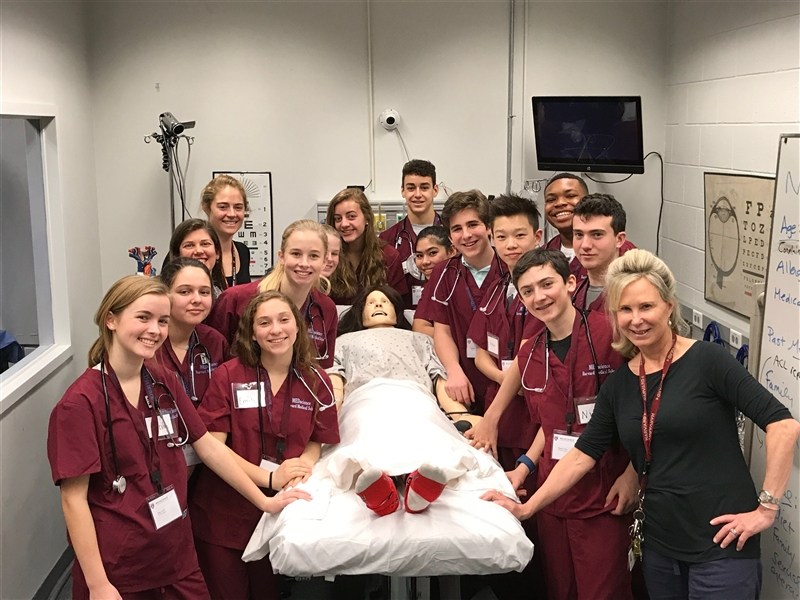
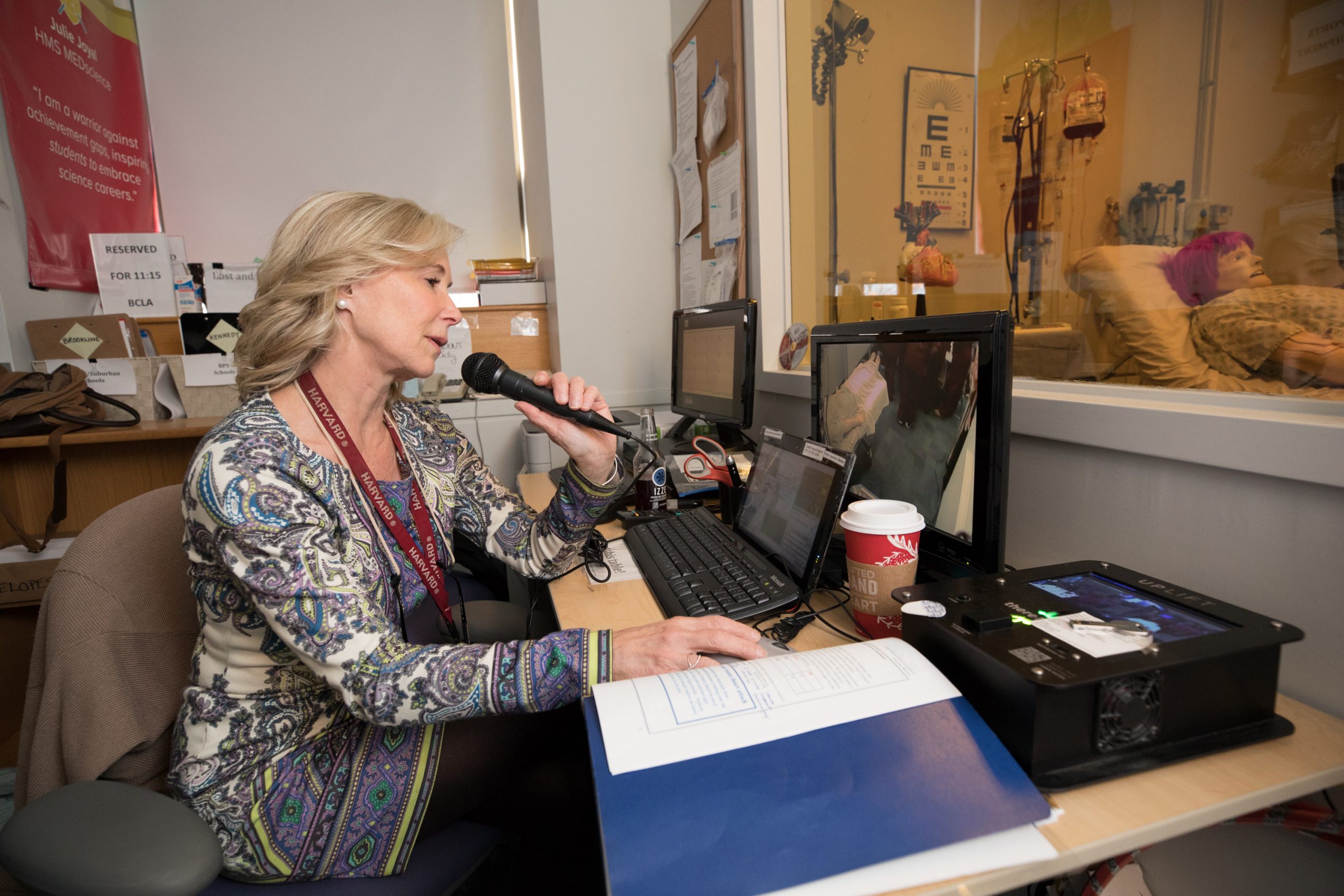
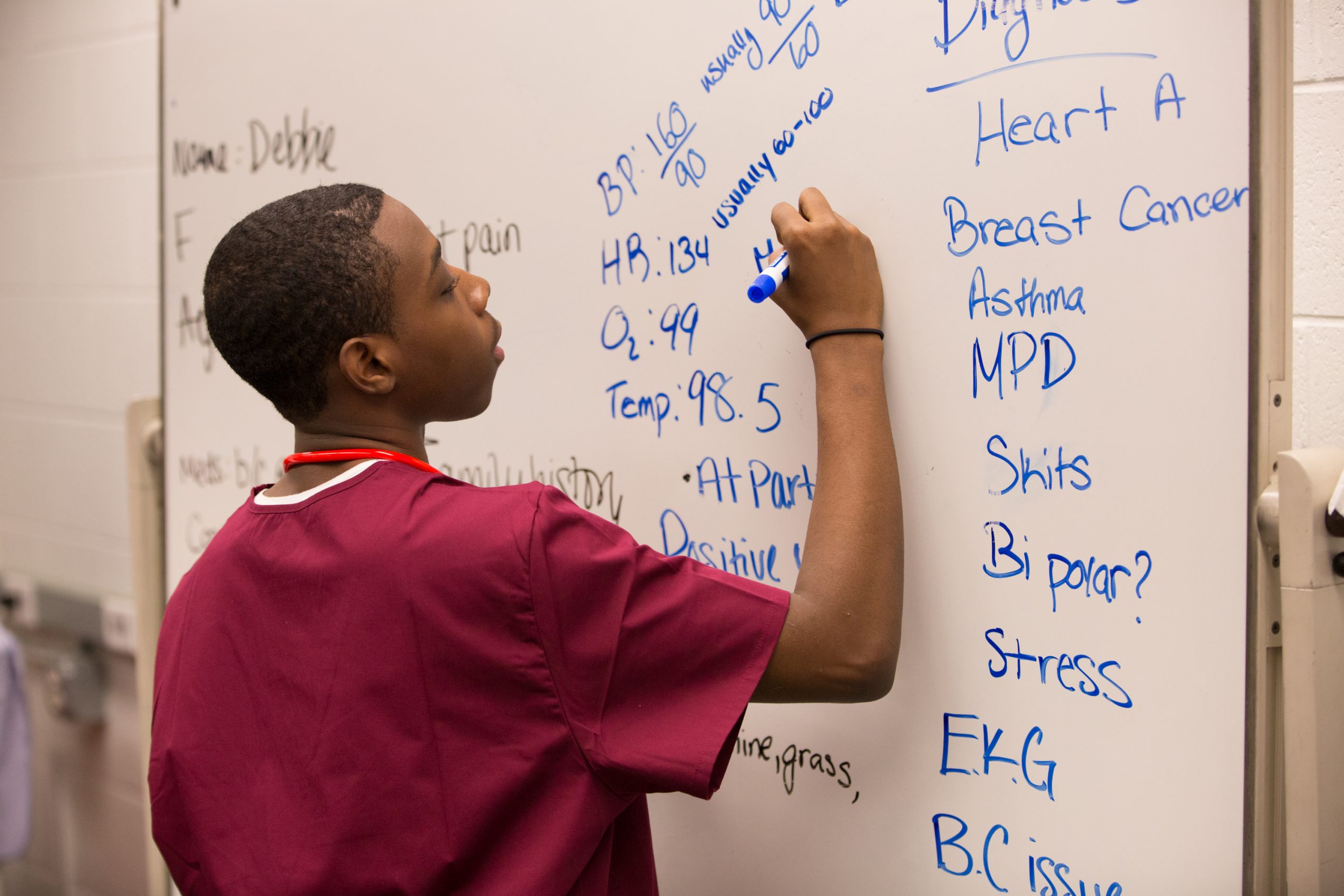
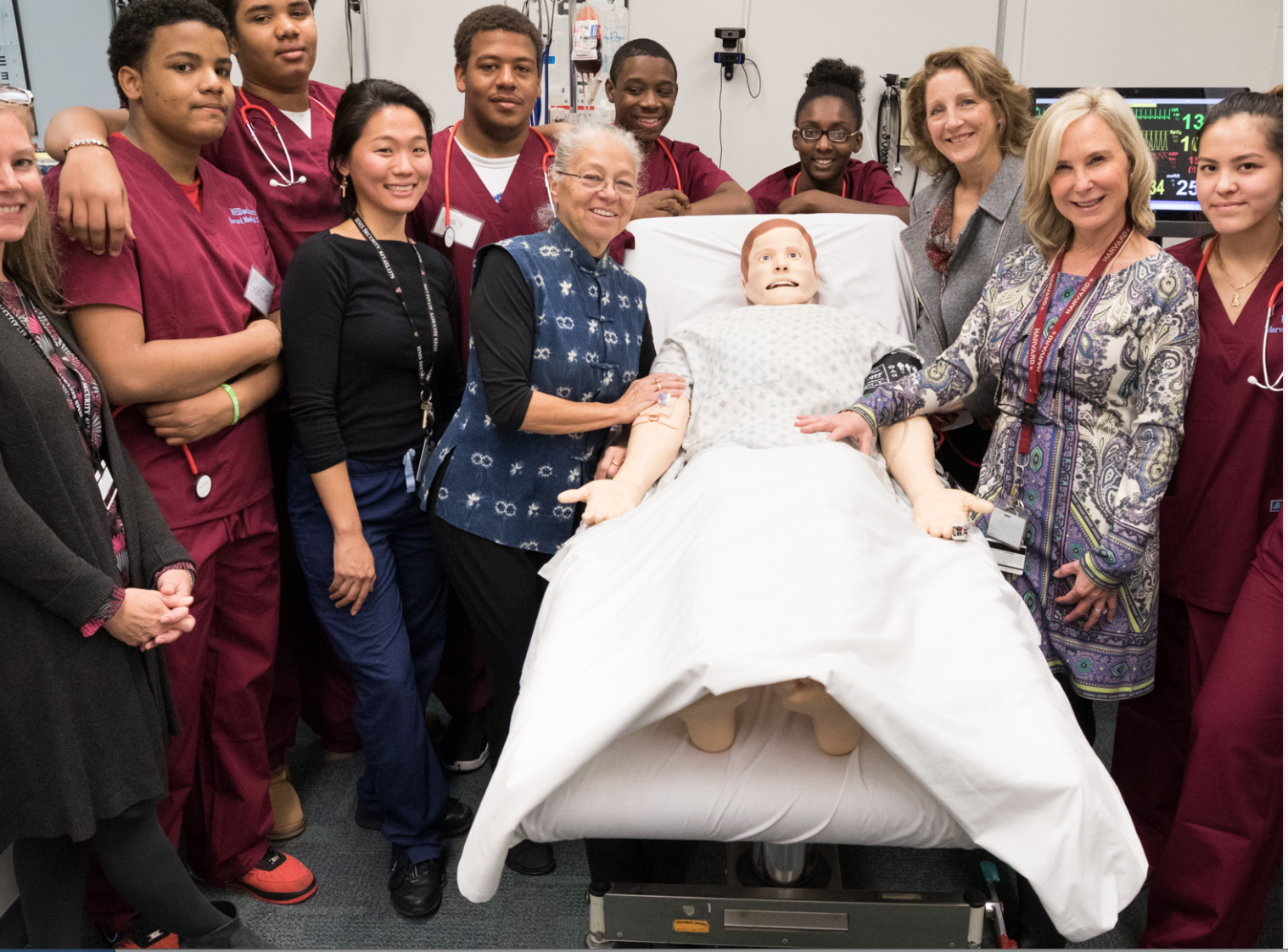
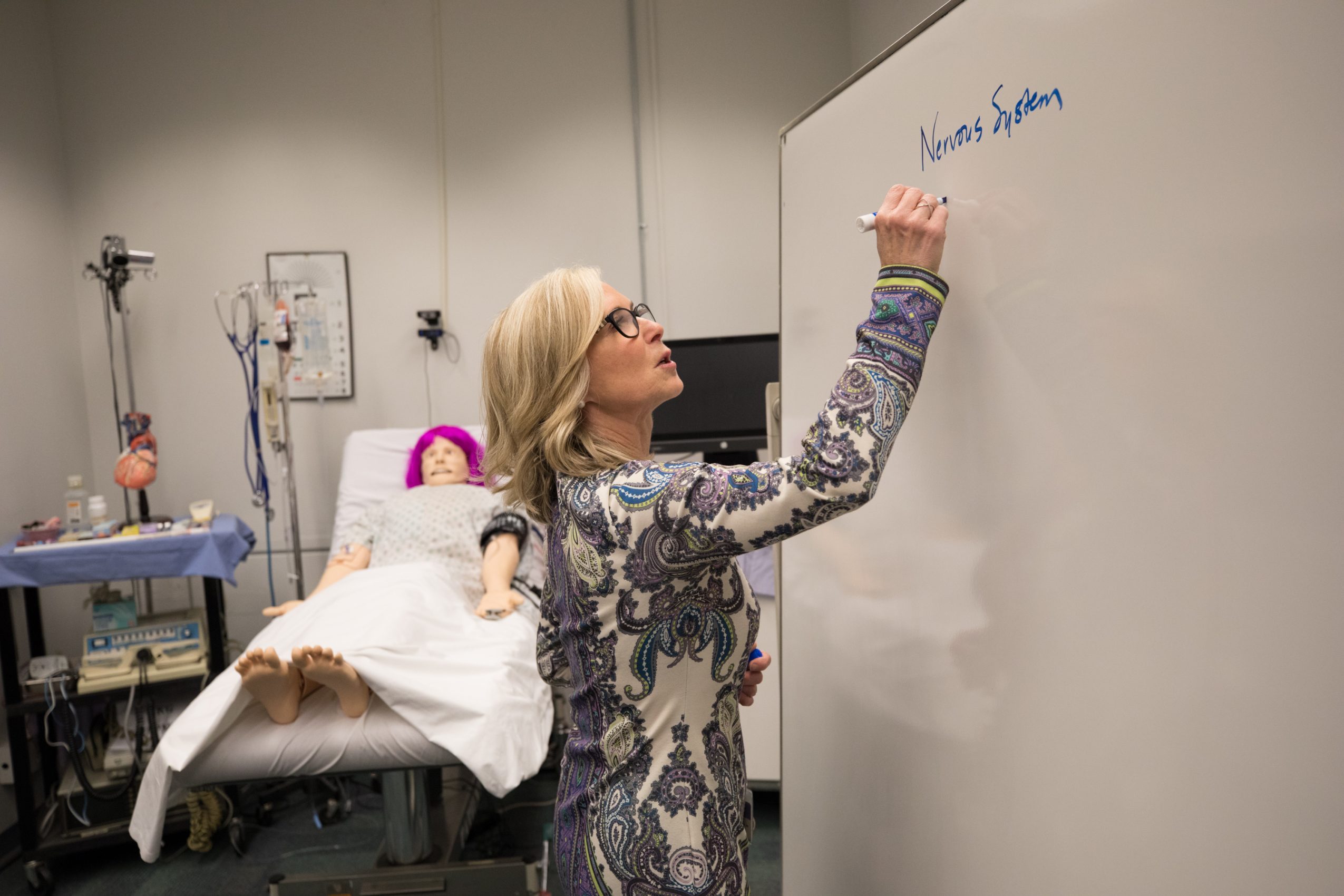
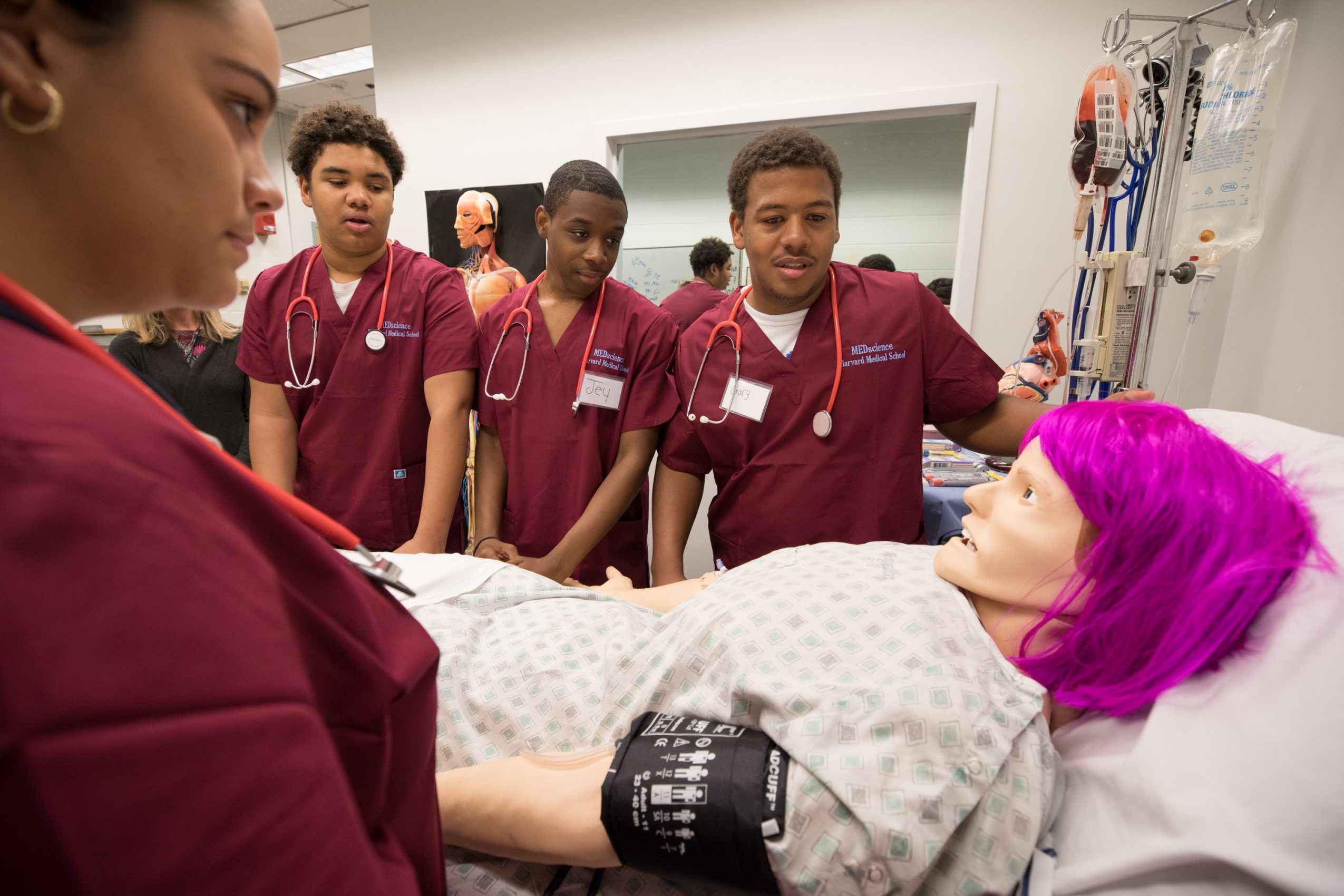

















Donna
November 15, 2018 at 11:51 pm
Julie, you’re the best. You can take you talent to the moon and back.
Miss you❤️
Nancie Chamberlain
November 16, 2018 at 7:40 pm
Inspiring story about an amazing woman! Keep up the great work Julie!
Marsha Zierk
November 16, 2018 at 9:49 pm
You are an inspiration to us all — and especially those struggling with learning disabilities or believing they are without opportunities.